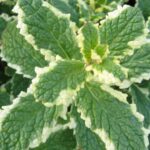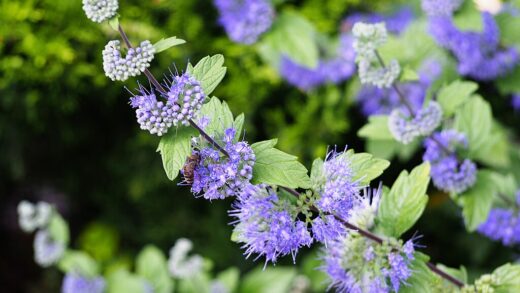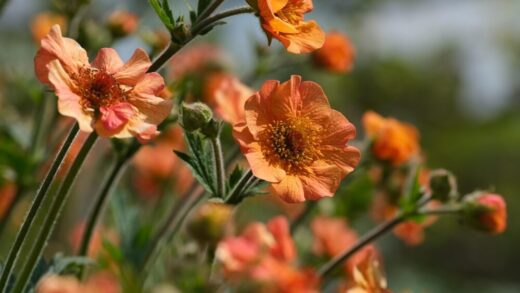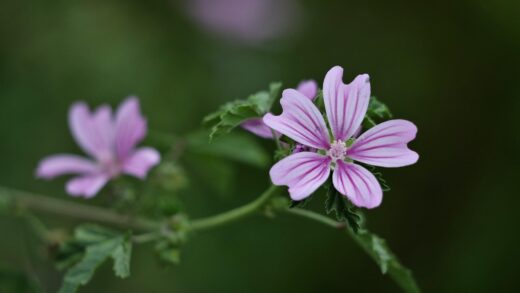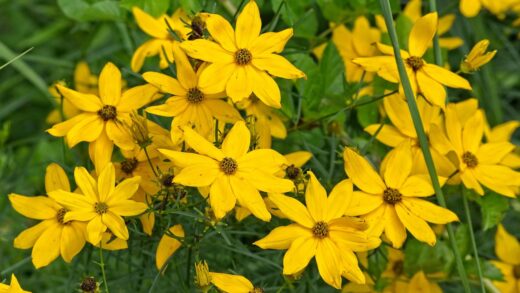Despite its resilient nature, the plush plant is not entirely immune to the threats posed by various diseases and pests, which can compromise its health and aesthetic appeal. The dense, velvety rosettes that make this plant so attractive can, unfortunately, also provide an ideal hiding place for common succulent pests, while its intolerance for excessive moisture makes it particularly vulnerable to fungal diseases. Proactive monitoring and early intervention are the cornerstones of effective pest and disease management. By understanding the common culprits and their symptoms, you can take swift and appropriate action to protect your plant, ensuring it remains a vibrant and thriving centerpiece in your collection.
The most significant disease threat to the plush plant is, without a doubt, root rot, a condition caused by various fungal pathogens that flourish in overly wet, poorly aerated soil. This is not a disease that attacks a healthy plant in a proper environment; rather, it is a direct consequence of improper watering practices. When the soil remains waterlogged for extended periods, the roots are deprived of oxygen and begin to die and decay, creating an opportunity for opportunistic fungi to take hold. The symptoms above the soil line, such as yellowing, mushy leaves and a wilting appearance, often only become apparent after significant damage has already occurred below the surface.
Another fungal issue that can affect the plush plant, particularly in humid conditions with poor air circulation, is powdery mildew. This disease manifests as a white, powdery coating on the surface of the leaves, which can eventually cause them to become distorted and drop prematurely. While less common than root rot, it can detract from the plant’s beauty and, if left unchecked, can weaken the plant over time. Improving air circulation around the plant and avoiding getting water on the leaves are key preventative measures against this and other foliar fungal problems.
On the pest front, mealybugs are one of the most common and persistent adversaries of the plush plant. These small, oval-shaped insects are covered in a white, waxy, cotton-like substance and tend to congregate in protected areas, such as the crevices between leaves, at the base of the rosette, and even on the roots (root mealybugs). They feed by sucking the sap from the plant, which can lead to stunted or deformed growth, yellowing leaves, and a general decline in the plant’s vigor. Their waxy coating makes them somewhat resistant to contact sprays, requiring a diligent and targeted approach to eradication.
Spider mites are another potential pest, although they are less common on succulents than on other houseplants. These tiny arachnids are difficult to see with the naked eye, but their presence can often be detected by the fine, web-like material they produce on the plant, particularly around the new growth. They also feed on the plant’s sap, causing small, stippled yellow or brown spots on the leaves. Spider mites thrive in hot, dry conditions, so increasing humidity around the plant can sometimes help to deter them. A strong spray of water can often be effective in dislodging them from the plant.
More articles on this topic
Common fungal diseases
Root rot is the most prevalent and dangerous disease for the plush plant, stemming almost exclusively from excessive watering and poor drainage. The fungi responsible, such as Fusarium and Pythium, thrive in anaerobic, waterlogged soil. The initial damage occurs below the soil line, where the roots turn brown or black, become soft and mushy, and lose their ability to absorb water and nutrients. Above ground, the plant may paradoxically appear wilted as if it is thirsty, but the lower leaves will be yellow and soft, not dry and wrinkled. If you suspect root rot, you must act immediately by removing the plant from the pot, cutting away all infected root tissue with a sterile tool, and repotting it in fresh, dry, sterile succulent mix after allowing the remaining healthy roots to callous.
Crown rot is another serious fungal issue that occurs when water is allowed to sit in the dense center of the plant’s rosette. The tightly packed leaves of the plush plant can easily trap moisture, creating a stagnant, humid microclimate that is ideal for fungal growth. This leads to the decay of the central growing point and the surrounding leaves, which will turn black and mushy. Crown rot is often fatal because it destroys the primary growth point of the plant. Prevention is the only effective strategy: always water the soil directly, avoiding the rosette, and ensure there is good air circulation around the plant to help any incidental moisture evaporate quickly.
Powdery mildew, characterized by its distinctive white, dusty coating on the leaves, is a foliar fungus that can affect the plush plant in conditions of high humidity and low light. While it is less deadly than root or crown rot, it can disfigure the plant and weaken it by interfering with photosynthesis. If you spot powdery mildew, isolate the affected plant to prevent it from spreading. You can treat it by spraying the plant with a solution of neem oil or a commercial fungicide formulated for ornamental plants. To prevent its occurrence, focus on providing bright light and ensuring good airflow to keep the leaf surfaces dry.
Sooty mold is a less direct fungal problem that is a consequence of a pest infestation, particularly from sap-sucking insects like mealybugs or aphids. These pests excrete a sweet, sticky substance called honeydew, which provides a food source for the sooty mold fungus to grow on. The mold itself does not infect the plant but covers the leaves in a black, soot-like layer, which is unsightly and can block light, hindering photosynthesis. The key to controlling sooty mold is to eliminate the pest infestation that is producing the honeydew. Once the pests are gone, the mold can often be gently wiped or washed off the leaves.
More articles on this topic
Identifying and treating mealybugs
Mealybugs are insidious pests that are particularly fond of the plush plant due to the many secure hiding spots its rosette provides. The most obvious sign of their presence is the small, white, cottony masses they produce, which can be found nestled deep between the leaves or at the junction where the leaves meet the stem. You may also notice a sticky residue, known as honeydew, on the leaves, which can attract ants or lead to the growth of sooty mold. In cases of a heavy infestation, the plant’s growth will appear stunted, and new leaves may emerge deformed.
For a minor infestation, the most direct method of treatment is to use a cotton swab or a small paintbrush dipped in 70% isopropyl alcohol (rubbing alcohol). Carefully touch the alcohol-soaked swab directly onto each visible mealybug and its cottony egg sac. The alcohol dissolves their protective waxy coating, causing them to dehydrate and die almost instantly. This method is highly effective for spot treatment but requires diligence, as you must be thorough in checking all the nooks and crannies of the plant to ensure you have eliminated all of them.
If the infestation is more widespread, a spray-based treatment may be more practical. You can create an effective insecticidal soap solution by mixing a teaspoon of mild dish soap into a liter of water. Spray the entire plant thoroughly, making sure to get the solution into the tight spaces between the leaves where the mealybugs hide. Neem oil is another excellent, more natural option that acts as both an insecticide and a fungicide. Mix it according to the product’s instructions and apply it in the same manner. It is best to apply these sprays in the evening to avoid the risk of leaf burn from the sun.
In severe cases, or for dealing with root mealybugs which live below the soil, a systemic insecticide may be necessary. These products are absorbed by the plant through its roots and transported throughout its tissues, turning the plant’s own sap into a poison for the feeding pests. This is a more aggressive approach and should be used as a last resort, following the manufacturer’s safety precautions and application instructions carefully. After treating a severe infestation, it is often a good idea to repot the plant in fresh soil to remove any remaining pests or eggs from the old medium.
Dealing with other common pests
While mealybugs are the most common adversary, the plush plant can occasionally be targeted by other pests, such as aphids and scale insects. Aphids are small, pear-shaped insects that are typically green or black and tend to cluster on the most tender parts of the plant, such as new growth and flower stalks. Like mealybugs, they suck the plant’s sap and excrete honeydew. A strong jet of water from a spray bottle is often enough to dislodge a small aphid population. For more persistent infestations, insecticidal soap or neem oil sprays are very effective.
Scale insects are another type of sap-sucking pest that can be more difficult to spot. They appear as small, immobile bumps on the stems and leaves of the plant, and they have a hard, waxy shell that protects them from many contact insecticides. Young scale insects, known as crawlers, are mobile and more vulnerable. For a light infestation, you can scrape the adult scales off with your fingernail or a small tool, and then treat the plant with horticultural oil or neem oil, which can smother the pests and their eggs. Systemic insecticides are also very effective against scale.
Spider mites, though more common on other types of plants, can sometimes infest a plush plant, especially in hot, dry, and stagnant air conditions. These tiny arachnids are difficult to see, but their presence is often revealed by fine webbing and a stippled, silvery, or bronzed appearance on the leaves. To combat spider mites, the first step is to increase humidity and improve air circulation around the plant. You can also wash the plant thoroughly with a strong spray of water to knock them off. If the infestation persists, insecticidal soap or a miticide can be used.
Fungus gnats are small, dark flies that are often seen buzzing around houseplants, and while the adult flies are mostly a nuisance, their larvae can be a problem. The larvae live in the top layer of moist soil and feed on fungi and decaying organic matter, but they can also feed on the fine roots of plants, including the plush plant. The key to controlling fungus gnats is to manage soil moisture. By allowing the top few inches of the soil to dry out completely between waterings, you create an inhospitable environment for the larvae. Sticky traps can be used to catch the adults, and a soil drench with a product containing Bacillus thuringiensis israelensis (BTI) can effectively kill the larvae.
Preventative care strategies
The most effective approach to managing diseases and pests on your plush plant is through consistent and diligent preventative care, which creates a strong, healthy plant that is naturally more resistant to problems. The foundation of this strategy is providing the correct growing conditions, starting with well-draining soil and a pot with a drainage hole to prevent the waterlogged conditions that lead to root rot. Placing the plant in a location with plenty of bright, indirect light and good air circulation will also make it less susceptible to fungal issues like powdery mildew and discourage many pests.
Proper watering technique is another critical element of prevention. Adhering strictly to the “soak and dry” method ensures that the roots are never sitting in stagnant water, which is the primary defense against root rot. Always watering the soil directly and avoiding the rosette prevents crown rot and other foliar fungal problems. A healthy, properly hydrated plant is also better able to withstand the stress of a minor pest infestation, giving you more time to notice and react to the problem before it becomes severe.
Regularly inspecting your plush plant is a simple yet powerful preventative measure. Make it a habit to look over your plant closely at least once a week, checking the tops and undersides of the leaves, the crevices of the rosette, and the surface of the soil for any early signs of trouble. Catching a few mealybugs or the first signs of powdery mildew allows you to intervene quickly with simple, targeted treatments before the problem escalates into a full-blown infestation or disease that is much more difficult and stressful to manage.
Finally, practicing good plant hygiene can significantly reduce the risk of introducing or spreading pests and diseases. When you bring a new plant home, it is always a wise practice to quarantine it away from your existing collection for a few weeks to ensure it is not harboring any hidden pests. Use clean tools when pruning or repotting your plants to avoid transferring pathogens from one plant to another. By creating a healthy growing environment and being a vigilant observer, you can prevent most problems from ever taking hold, allowing your plush plant to thrive without interruption.







